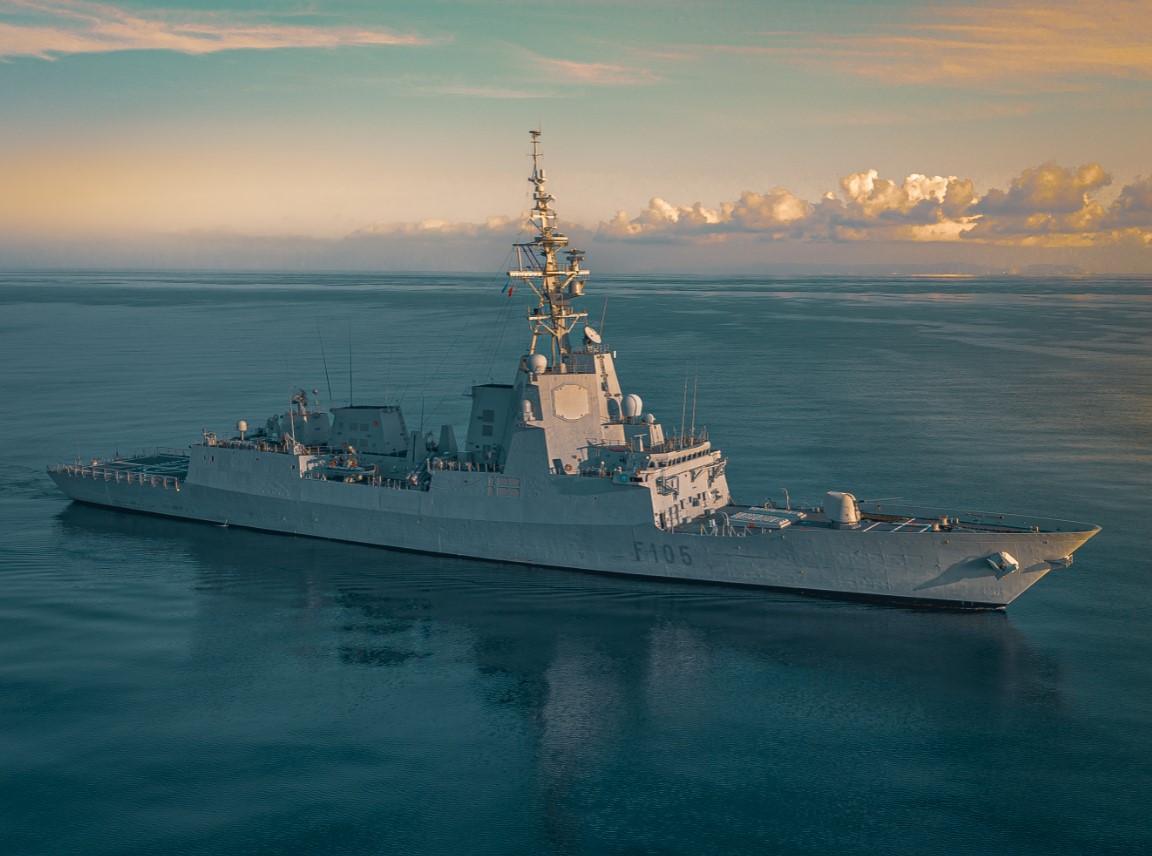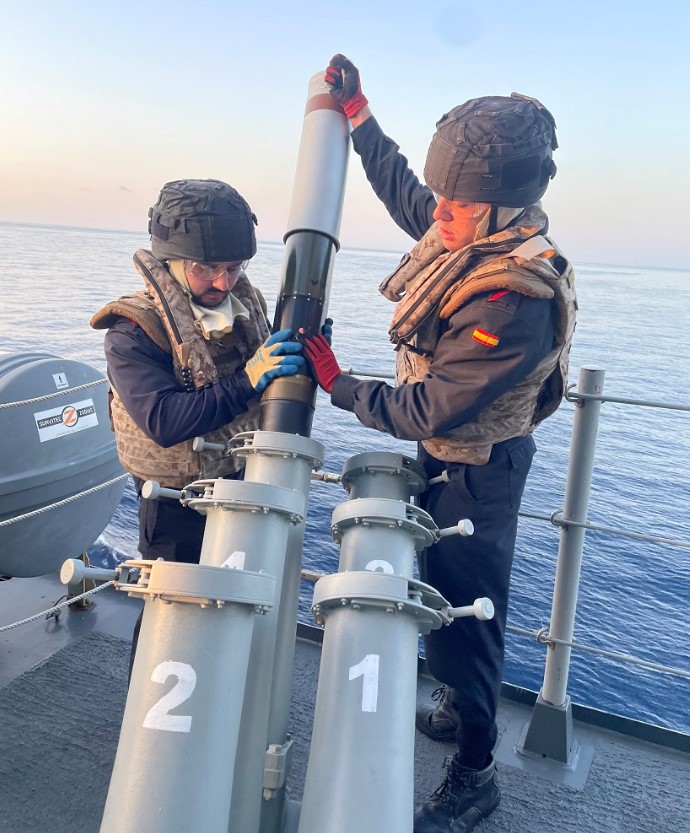
The frigate ‘Cristobal Colon’ F-105 tracks Russian naval units in the Eastern Mediterranean Sea
- The ‘Cristóbal Colón’ is part of NATO's Standing Maritime Group 2 (SNMG-2)
The frigate ‘Cristobal Colon’ (F-105) has been monitoring the activities of several naval units of the Russian Federation in the Eastern Mediterranean. The Navy vessel remains in its assigned patrol area east of Cyprus, sailing in international waters.
To be precise, the ‘Cristóbal Colón’ has taken charge of a Russian naval group composed of two frigates of the ‘Almirante Gorshkov’ class, and one of the ‘Almirante Grigorovich’ class, as well as the Kilo II class submarine that was in the area to carry out naval exercises with the other Russian maritime units.
The frigate also detected the presence of several Russian aircraft, which conducted joint training with the Russian naval units. Both combat aircraft, helicopters and patrol aircraft were observed.
Among the activities carried out by these vessels was the launching of several hypersonic surface-to-surface missiles.
The purpose of these patrols is to demonstrate NATO's presence in the Mediterranean Sea, an area of special interest to the Alliance; to ensure freedom of navigation; and to maintain an adequate level of deterrence. In this context, the ‘Cristobal Colon’, while monitoring the Russian exercises, collaborated with various aircraft and ships from different allied countries.
NATO Standing Maritime Groups
NATO's Standing Maritime Groups (SNF), which include two escort groups (SNMGs) and two minehunting groups (SNMCMGs), are the forces that provide a permanent maritime presence for NATO.
Its key areas of operation are the Mediterranean Sea, Black Sea, Baltic Sea, Northern Flank,Its key areas of operation are the Mediterranean Sea, Black Sea, Baltic Sea, Northern Flank. SNMG-2, operating in Mediterranean waters, forms the core of NATO's ‘Very High Readiness Maritime Force’ (VJTF-M) as part of Operation Noble Shield in response to Russia's invasion of Ukraine.
This deployment reinforces Spain's and the Navy's commitment to the Alliance, as well as its solidarity with other NATO member countries, thus supporting deterrence and collective defence.
Fotos



